An introduction to Shaanxi
Some people may have come to Shaanxi and visited some tourist attractions such as the Terracotta Warriors as well as the Huaqing Pool, and watched The Everlasting Regret, the first large-scale live action historical dance drama about the love between Emperor Xuanzong in the Tang Dynasty and Yang Guifei, his concubine. And some people may have not. The most prominent feature and the most eye-catching background of Shaanxi tourism is its culture.

Sanqin: one of the birthplaces of Chinese culture
Shaanxi currently has a population of 38.35 million and a total area of 205,800 square kilometers. It encompasses two large basins of the Yangtze River and the Yellow River, and its climate is dominated by three climatic zones, namely, the medium temperature zone, warm temperate zone and subtropical climates, which naturally formed the three major regions of northern Shaanxi, Guanzhong and southern Shaanxi, and has created a fantastic scene of the Jiangnan water town, the plains, the plateaus and gullies. The potential economic value of the mineral resources is more than one-third of the national total volume, ranking first in the whole of China.
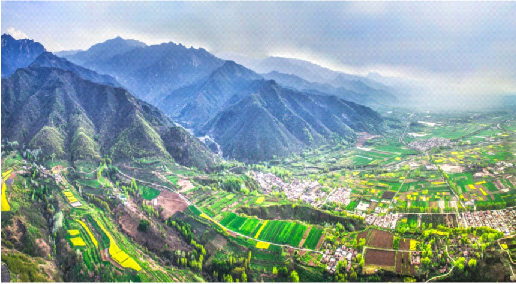
On the magic land of great civilization, Shaanxi has many spiritual symbols and natural signs of Chinese civilization, Chinese revolution, and Chinese geography. As an important birthplace of the Chinese nation and culture, here used to live Homo erectus lantianensis more than 1.1 million years ago, the Dali ape man of 200,000 years ago, and the Banpo matriarchal clan society of more than 6,000 years ago. The Shimao Neolithic site of 4,300 years ago is the largest prehistoric city site in China that has been discovered to date.
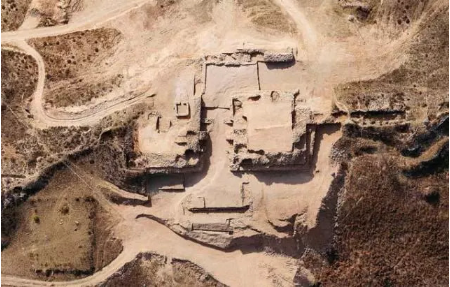
The Yellow Emperor, also referred to as the humane primogenitor of the Chinese nation, created the Chinese civilization in Shaanxi 5,000 years ago. The Yan Emperor was revered as “Shen Nong” for inventing farming techniques and finding the “five cereals” (rice, millet, red bean, soybean and wheat). Hou Ji, the great-great-grandson of the Yellow Emperor, also known as the Chinese agricultural ancestor, taught the farmers the arboriculture, planting the five cereals, and sowing and reaping in Shaanxi, and created the splendid farming culture. The integrity, richness and supremacy of more than 50,000 precious sites and over one million pieces of cultural relics are unique and rare in the world. Every relic remains silently watching the spiritual homeland of the Chinese nation. Every story reminds the Chinese descendants of their common nostalgia. There are more than 70 large emperors’ mausoleums, representing the most abundant historical memory of the Chinese nation.
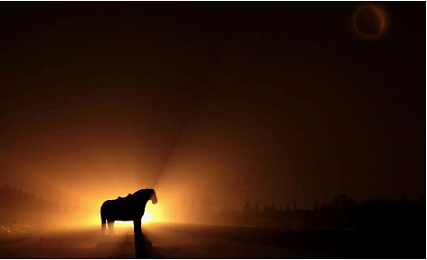
The Mausoleum of the Yellow Emperor, which is known as “the first mausoleum of the world”, is a national holy place where the Chinese people inherit and carry forward Chinese culture. The cypress planted by the Yellow Emperor 5,000 years ago is still green and tall. More than 200 foreign heads of state and government have visited the Terracotta Warriors, “the eighth wonder of the world” and the world’s largest underground military museum. The former French President Jacques Chirac said, “As no one can boast about his visit to Egypt without visiting the Pyramids, no one can claim to have visited China without seeing these Terracotta Warriors.”

Shaanxi is also the cradle of the Chinese revolution. Northern Shaanxi is the foothold of the victory of the Red Army’s Long March, and the starting point for the victory of the Anti-Japanese War and the Liberation War. Baota Mountain has become the beacon of the Chinese revolution, and the holy land of Yan’an is the spiritual home of the Chinese Communists. People can also go to Liangjiahe Village to learn about the daily village life.

The great Chang’an City
Chang’an City represents half of the Chinese history. As a saying goes, “If one wants to know the 100-year history of China, he should go to Shanghai, if one wants to know the 1,000-year history of China, he should visit Beijing, and if one wants to know the 5,000-year history of China, then he should go to Xi’an.” It was the central stage in ancient Chinese history, where 13 political regimes including the dynasties of Zhou, Qin, Han and Tang had made it their capital in a span of 1,000 years. Xi’an has been developed into a city in over 3,100 year’s period. It is one of the cities where most dynasties made it as capital and the city that being capital for the longest time in China’s history, and is regarded as one of the four ancient capitals of civilizations in the world.
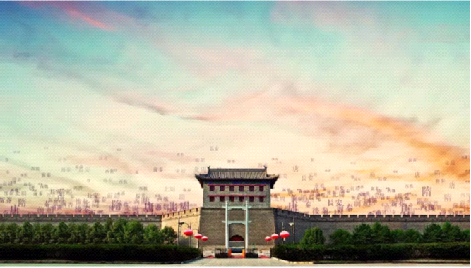
The tourist attractions including the Site of the Epang Palace of the Qin Dynasty, the site of Chang’an City in the Han Dynasty, the Daming Palace National Heritage Park, the City Wall Relics of the Tang Dynasty, the Xi’an Qujiangchi Site Park, the Dayan Pagoda Site Park, the Shaanxi History Museum, and Xi’an Beilin Museum have witnessed the glory of ancient Xi’an. They remind generations of the Chinese nation of the vicissitudes of history and the traces of the time. From them, people can take the responsibility to retain the cultural roots, and have the chance to experience the romantic atmosphere of “a city of culture and half a paradise for people to enjoy”.
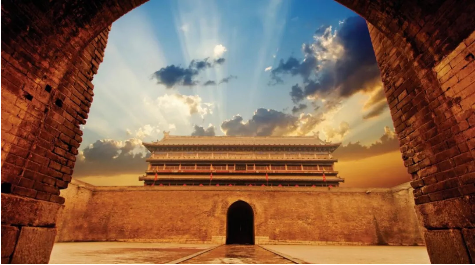
The marvelous events, such as King Wu’s conquest over King Zhou of the Shang Dynasty (also known as The Battle of Muye), the Rite and Music of the Duke of Zhou in the Shang Dynasty, Reforms of Shang Yang in the Qin Kingdom, Qin Shi Huang Uniting the Six Nations in the Qin Dynasty, the Rule of Wen and Jing in the Han Dynasty, the Prosperous Age of Emperor Wu in the Western Han Dynasty, Confucianism dominating all the schools in the Qin Dynasty, the ruling of Emperor Wen in the Sui Dynasty, the Governance Emperor Taizong during the Zhenguan period of the Tang Dynasty, the Kaiyuan Flourishing Age (the reign of Emperor Xuanzong in the Tang Dynasty) and the rule of Empress Wu Zetian during the Tang Dynasty, outshine other affairs in Chinese history and win worldwide attention.
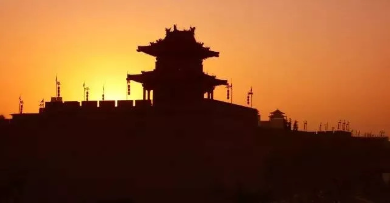
The Xi’an City Wall of the Ming Dynasty is the largest and most complete ancient military castle in the world. You can enter the City Wall to overlook the Chang’an City and witness the years of change, drink a cup of coffee or beer on the foot of the City Wall to enjoy the leisure time of the ancient city, and take a walk in the Muslim Quarter and Yongxing Fang to experience the unique charm of the national integration and the intangible cultural heritage.
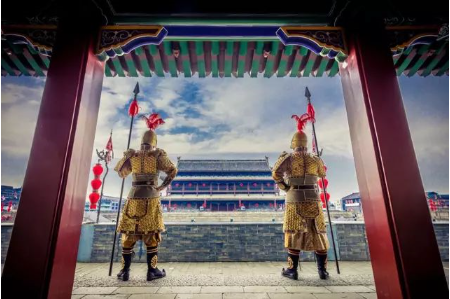
Xi’an Inno Start-up Wonderland has a youthful atmosphere everywhere; the Shaanxi Opera House, the Xi’an Concert Hall, the Xi’an Art Museum and the Dahua 1935 Creative Street, etc., all of which endow the city with traditional and fashionable charm; 108 high education institutions and eight colleges and universities under the “Double First-Class” initiative are also worth a visit.
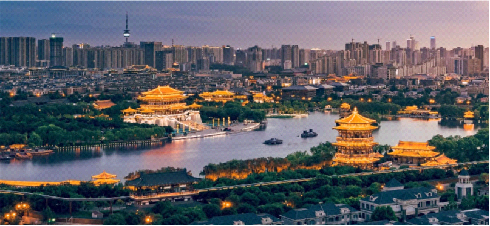
The amazing Silk Road
Since ancient times, Shaanxi has been the gateway and hub for China’s opening-up to the outside world. President Xi Jinping said, “Shaanxi is my hometown, and it is the starting point of the ancient Silk Road. More than 2,100 years ago, Zhang Qian, a great diplomat in the Western Han Dynasty and a native of Chenggu County of Hanzhong, departed from Chang’an and went to the Western Regions twice, opening the door to friendly exchanges between China and Central Asian countries, and explored the Silk Road that traverses from the east to the west of Eurasia and connects Europe and Asia.
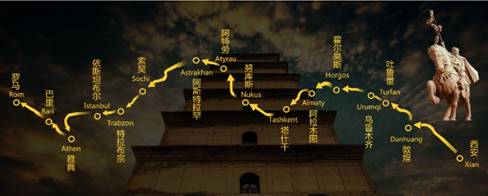
Wang Zhaojun’s marriage to the King of the Xiongnu (an ancient Chinese nationality) in the Western Han Dynasty, Banchao’s 30-year management of the western regions in the Eastern Han Dynasty, and Xuanzang’s Journey to the west in the Tang Dynasty promoted foreign exchanges and cooperation with China. More than 1300 years ago, Chang’an City in the Tang Dynasty had exchanges with more than 300 countries, and 100,000 of the 1 million people were foreigners. As a part of the “Silk Roads: the Routes Network of Chang’an-Tianshan Corridor” project, the Site of Weiyang Palace in Chang’an City in Western Han Dynasty, Daming Palace of the Chang’an City of the Tang Dynasty, the Dayan Pagoda, the Xiaoyan Pagoda, the Xingjiao Temple, the tomb of Zhang Qian in Chenggu County, and the Giant Buddhist Temple of Binxian County were successfully included in the World Cultural Heritage List.

These are the cultural heritage of the Silk Road in its heyday and are the bright pearls in the history of human civilization. People can walk into these places and listen to the long echoes of the Camel Bell on the Silk Road, and think about why we are called the Han People, why we speak Chinese, and why the places where Chinese people gather around are called Tang Ren Jie (which means Chinatown in Chinese language).
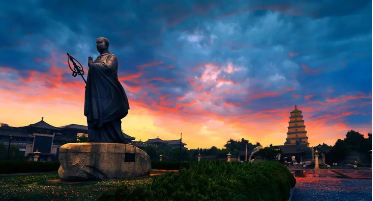
With the frequent exchanges with foreign countries, Buddhism was introduced into Shaanxi. Shaanxi is the “second hometown” of Buddhism, and six ancestral temples out of the eight of the Han dynasty Buddhism including the Sanlun (Three Treatise) school, the Faxiang school, Vinaya school, Pure Land school, the Kegon school, the Esoteric school were all developed here. The Famen Temple became a world-famous Buddhist shrine due to the placement of Sakyamuni’s finger bone relics, and was named as “the ninth wonder of the world” by UNESCO; Kumarajiva, the ancestor of the Eight Buddhist Schools and the originator of translation studies, translated and preached the scriptures in Shaanxi and had a profound influence on the development of the Buddhism in Shaanxi and China.
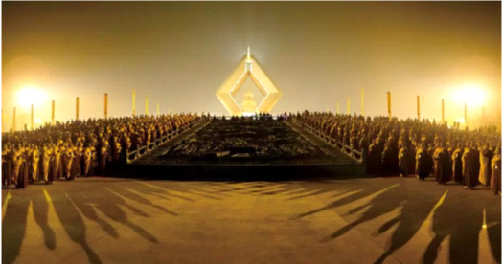
The Yongning Gate in Xi’an is the cultural gateway of China. Getting a glimpse of the Chang’an Impression – the Welcoming Ceremony of the Grand Tang Dynasty would make it possible to experience “the first ritual of the world”, the highest etiquette in the Tang Dynasty.
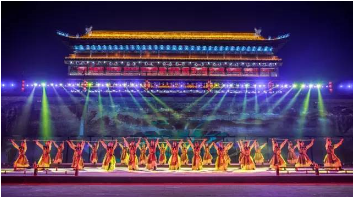
With the in-depth implementation of the “Belt and Road” Initiative, Shaanxi is striving to develop the pivot economy, the gateway economy and the flow economy. It also works to build a new pattern of all-round two-way opening up with links running eastward and westward over land and through the air. Shaanxi has established economic and trade relationships with more than 190 countries and regions. Xi’an also aims to develop into a national central city. 112 of the world’s top 500 enterprises have settled in Shaanxi, and the one and only free trade pilot zone in northwestern China is under high-level construction.
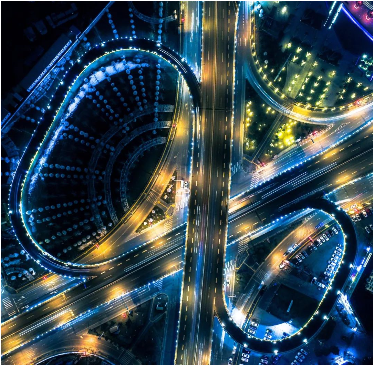
Xi’an Xianyang International Airport has been approved for 72-hour visa free transit, the China Railway Express “Chang’an” achieved normal operation, and the new railway station has become the largest logistics distribution center of the Silk Road Economic Belt. The length of the expressways opened to traffic reaches 5,279km. The total running mileage of Shaanxi’s operational railway is 5,290km, and 50 international air routes have been opened up. The high-speed railway network connecting the provincial capitals surrounding Shaanxi has formed a “one-day life circle”, highlighting the advantages of Shaanxi as a gateway and a hub.
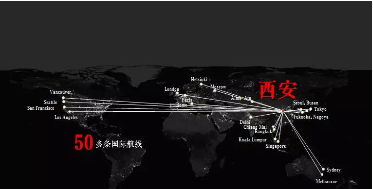
More and more major foreign affairs like the heads of state and government visiting here, and high-level forums and global conferences have been held in Shaanxi. All these events show the world a new image of Shaanxi, with the integration of history and modernity, as well as its traditions and fashions. The concept of “Shaanxi, the key to understand China” has formed a consensus among tourists.
The marvelous culture
With 5,000 years of civilization that has never been interrupted, Shaanxi fostered a large pool of well-known cultural masters who have left brilliant cultural and artistic achievements for humanity. The philosopher Lao Zi in the Spring and Autumn period preached “Tao Te” (the morality) in Shaanxi 2,500 years ago, and completed the Tao Te Ching, the king of the classics, in the Louguantai, which reached the philosophical peak in ancient China. Louguantai has topped the 72 blessed places of Taoism.
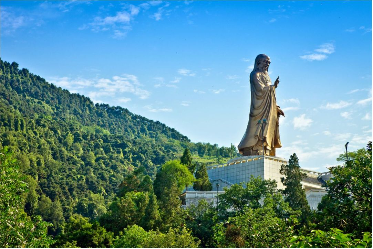
The Chang’an Imperial College was the highest institution during the Han Dynasty and the first higher education institution established in China. The Guigu Mountain in Shiquan County, Shaanxi Province, is the home of the oldest military school in the world. It was once the living and teaching place of Wang Xu, also known as Guiguzi, a famous strategist, educator and the founder of the political strategy in the Warring States period.
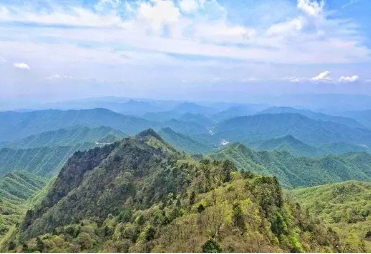
Shaanxi is the hometown of The Book of Songs, the first poetry collection of China. The first song “By the riverside, a pair of turtledoves are cooing” describes the beautiful landscape of the Yellow River Wetland in Heyang County, Weinan. Sima Qian, the great litterateur, historian and thinker in the Western Han Dynasty from Hancheng, wrote the Records of the Grand Historian (Shiji). The book is honored as “a masterpiece of history”. You can walk into the Sima Qian Temple to learn about the real and great historical master.
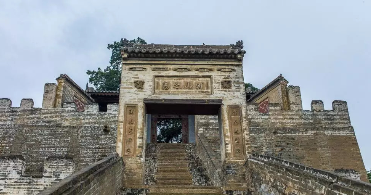
The Tang Dynasty (A.D.618-907), which lasted 289 years, is also the “golden age” of the unprecedented prosperity of Chinese poetry. Over 2,200 talented poets, including Li Bai, the romantic poetic genius, Du Fu, who was always concerned about the country and the people, Bai Juyi, Wang Wei, Du Mu, Meng Haoran, Han Yu and Liu Zongyuan, left more than 48,900 outstanding poems. Almost half of them are about Chang’an. They have contributed immortal classics to the treasure-house of the Chinese literature.
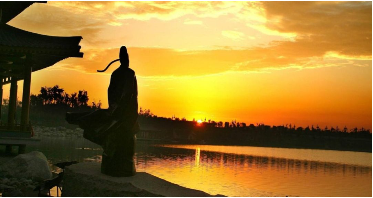
Zhang Zai, a thinker and educator in the Song Dynasty from Mei County, Baoji, left four ontological goals for intellectuals: To build up the manifestations of Heaven and Earth’s spirit, to create a good life for the populace, to develop past sages’ thinking, and to open up eternal peace; Cang Jie, the inventor of the Chinese characters from Baishui County, Weinan, created hieroglyphics, unveiling a new era of human civilization; Cai Lun invented paper-making technology in Longtingpu, Hanzhong, benefiting mankind; The Qin Empire (221-206B.C.) unified the characters, weights and measures, and used the same measure units; famous calligraphers like Yan Zhenqing from Xi’an, Liu Gongquan from Yaozhou district, Tongchuan, Zhang Xu and the Painting Sage, Wu Daozi in the Tang Dynasty created a brilliant era of Chinese calligraphy and painting art in Chang’an.
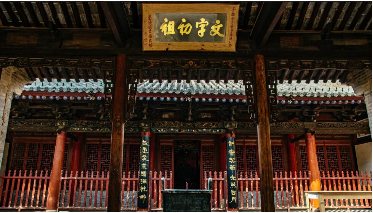
Shaanxi has over 2,000 years of tea history, and tea like Ziyang Maojian, Hanzhong Xianhao and Jingyang Fu Tea are famous all over the world; The Wine Sage Du Kang was honored as the first winemaker in the Baishui workshop. The saying “How can I brush grief aside? But by drowning it in wine” is widely known. The Qin liquor - Xifeng has been passed down for more than 3,000 years and is one of the eight famous liquors in China. Qin Yueren, the originator of the traditional Chinese medicine, became famous for treating and curing people here. People gave him the same name as the legendary doctor Bian Que. Sun Simiao from Yaozhou district, Tongchuan, was titled as China’s King of Medicine. He pushed the study of health maintenance thoughts to the highest level, and his works like Qian Jin Yao Fang (Essential Formulas for Emergencies Worth a Thousand Pieces of Gold) were claimed as the encyclopedia of the clinical practical medicine for Chinese medical scientists. Wang Zhe also known as Wang Chongyang from Xianyang, founded the Quanzhenjiao, a discipline of the Taoism. The famous Taoist Zhang Sanfeng cultivated himself in Jintaiguan Daoist Temple, Baoji, for over five decades. He also researched and created Tai Chi.
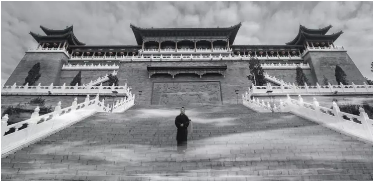
Inheriting and carrying forward the imperial cuisine skills, as well as integrating dietary styles of various ethnic groups, a unique food culture of Shaanxi has been formed. The folk culture of Shaanxi is also as colorful as the modern culture. The stories like Dayu, who chiseled the dragon gate in Hancheng to control floods and the saying that about the carp leaping through the dragon gate is widely known. As one of the four great love legends in ancient China, the fairy tale of the Cowherd and Weaver Girl was believed to originate from Doumen Town in Xi’an. Countless legends have spread so far. There is the story of Jiang Taigong, a strategist in the Qi Kingdom going fishing, Xiaohe, a strategist in the Western Han Dynasty chasing Han Xin, a strategist in the Western Han Dynasty under the moon, a dinner party at Hongmen, the shepherd Suwu, a righteous man in the Western Han Dynasty, Zhu Geliang, a politician, strategist and diplomat in the Three Kingdom Period out of Qishan for six times and Hua Mulan joining the army in the place of her father.

Hundreds of cultural programs covering the Folk Songs of Northern Shaanxi, the Ansai waist drums and the Laoqiang Opera from Huayin County have been listed into the intangible cultural heritage list at all levels. Before the reform and opening-up, representative literary works like The White-hair Girl, The Yellow River Cantata and The East is Red were created. The excellent works like Liu Qing’s The History of Entrepreneurship, Du Pengcheng’s Defend Yan’an, as well as Lu Yao’s Ordinary World, Chen Zhongshi’s White Deer Plain, Jia Pingwa’s Qin Opera since the reform and opening-up have profoundly been embraced. Numerous films and TV shows like Life, Red Sorghum, Ju Dou, White Deer Plain and Ordinary World have all become popular.
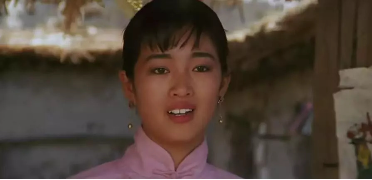
The Qinling Mountains
The Qinling Mountains divide China into the north and the south and serves as a major east-west mountain range. It stretches for 1,600 kilometers from the east to the west, and the width ranges from tens of kilometers to two or three hundred kilometers from the north to the south. It is also the climatic and geographical boundaries between north and south China, the water-shed of the Yangtze River and the Yellow River, as well as an important ecological security shelter. Qinling is hailed as the “Chinese Central Park” and the dragon vein of Chinese civilization.

In the “natural bio-gene pool” of the Qinling Mountains, there are more than 3,400 wild spermatophytes, accounting for 10% of the overall volume in China. People can walk through the forest and take a look at the rare animals and plants like giant pandas, crested ibises, golden monkeys, takins, larix chinensises and purple peonies. At present, there are 345 giant pandas living in the Qinling Mountains, making it number one in the world in terms of population density. Mount Taibai is the first peak to the east of the Qinghai-Tibet Plateau, and the “snowy Mount Taibai in June” outshine the “eight scenic spots in the Guanzhong area”.
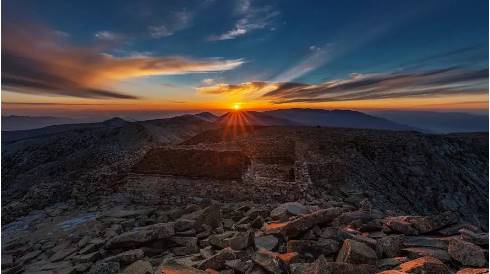
Tourists can climb the top of Mount Hua in China and experience the wonders of nature in the most dangerous mountain in the world. Adventure stories of literati of all ages in the Qinling Mountains have formed the most enjoyable landscape scroll along the Mount Zhongnan.
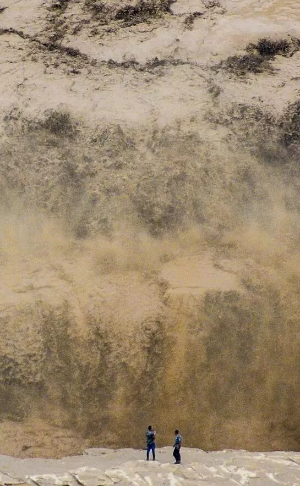
People can also visit the second largest waterfall in China, the Hukou Waterfalls, and the “natural Tai Chi diagram” Qiankunwan River Bend, a great river bend of the Yellow River, to feel the magnificent mother river of the Chinese nation; The 828km of Yanhuang Highway along the Yellow River is praised as the most beautiful “China’s No.1” highway, and the paradise for self-driving tours.
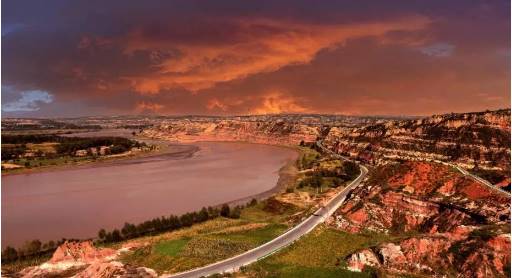
Then people can go to the riverside of the Hanjiang River, listening to the poems of praise through the ages; or take a boat to see the natural scenery of China’s largest freshwater lake in desert in the Hongjiannao scenic area.

This is the sunrise and sunset in Shaanxi. The fascinating scenery can be seen in the starry sky, and the profound history requires us to find out by ourselves.


